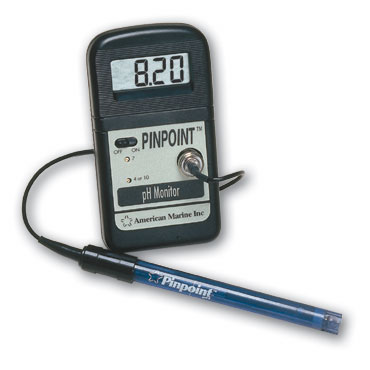The pH and alkalinity are directly related in the same way that C02 and pH in the human body are regulated. Check out C02 exchange and the acid base buffer system (kidneys/lungs), Been a long day at work. Trying to skim through. There are a number of factors that you will consider.
1) ph and temperature relation (dissolved oxygen and co2 are dependent on temp to a smaller degree, increase temp can be more difficult for oxygen to remain in water, this Co2 accumulates (directly proportional)
2) Environmental C02 (yes it increases and decreases) for this the alkalinity is buffering this through the equation
HA(aq) +OH- (aq) ---> A- (aq) + h20 (l)
Ha(aq) + H20(l) ---> A- (aq ) + H+
where Ka= (H+)(A-)/(HA)--> [H+] =kA (HA)/A-)
within the H+ HCO3- <--> h2C03 <--> C02 + H20
when you have CO2 it is the acid (HA) that pushes the equilibrium back towardS HC03-
As you push the equilibrium to maintain the buffer capacity it shifts and causes the formation of a Precipitate with C02.
and a result of pH will drop within the buffer system as it shifts to deal with the C02
If you live in a city you will have higher C02 you may have more difficulty buffering the alkalinity (as you are precipitating out C02 to keep the ph buffer capacity).
3) Strontium and other elements, these are also part of your buffer system. Low strontium may result in poor buffering or increase CO2 and thus decrease in pH
4) You looked at your tank funny and its mad at you....
5) Bicarbonate - drops ph over a few hours then it will increase again and will functionally alter the ph pretty much regardless of C02 level in atmosphere.
6)number of fish and metabolic processes
The list goes on, however it becomes minor things that an aquarist can't manage (ie. bacterial blooms) increase nutrient breakdown by bacteria from over feeding...
The main thing is ... My aquarium is harder to look after than my ICU patients.
But ph and alkalinity are a direct relation to C02 in the same means of that of the kidneys buffering c02 in our body. as per the math equation above if you like that stuff. factors outside of the dissolved C02...ie., temp, minor elements (or salinity i should say), metabolic processes in the tank and outside the tank. However the most important one really is the relation of PH, C02 and alkalinity.
(check out youtube kidney acid base buffer systems to understand PH and Buffers) it will be helpful and what I use to teach this buffer system to students.
1) ph and temperature relation (dissolved oxygen and co2 are dependent on temp to a smaller degree, increase temp can be more difficult for oxygen to remain in water, this Co2 accumulates (directly proportional)
2) Environmental C02 (yes it increases and decreases) for this the alkalinity is buffering this through the equation
HA(aq) +OH- (aq) ---> A- (aq) + h20 (l)
Ha(aq) + H20(l) ---> A- (aq ) + H+
where Ka= (H+)(A-)/(HA)--> [H+] =kA (HA)/A-)
within the H+ HCO3- <--> h2C03 <--> C02 + H20
when you have CO2 it is the acid (HA) that pushes the equilibrium back towardS HC03-
As you push the equilibrium to maintain the buffer capacity it shifts and causes the formation of a Precipitate with C02.
and a result of pH will drop within the buffer system as it shifts to deal with the C02
If you live in a city you will have higher C02 you may have more difficulty buffering the alkalinity (as you are precipitating out C02 to keep the ph buffer capacity).
3) Strontium and other elements, these are also part of your buffer system. Low strontium may result in poor buffering or increase CO2 and thus decrease in pH
4) You looked at your tank funny and its mad at you....
5) Bicarbonate - drops ph over a few hours then it will increase again and will functionally alter the ph pretty much regardless of C02 level in atmosphere.
6)number of fish and metabolic processes
The list goes on, however it becomes minor things that an aquarist can't manage (ie. bacterial blooms) increase nutrient breakdown by bacteria from over feeding...
The main thing is ... My aquarium is harder to look after than my ICU patients.
But ph and alkalinity are a direct relation to C02 in the same means of that of the kidneys buffering c02 in our body. as per the math equation above if you like that stuff. factors outside of the dissolved C02...ie., temp, minor elements (or salinity i should say), metabolic processes in the tank and outside the tank. However the most important one really is the relation of PH, C02 and alkalinity.
(check out youtube kidney acid base buffer systems to understand PH and Buffers) it will be helpful and what I use to teach this buffer system to students.


















